Nut moth, what is its harm, how to get rid of food moth
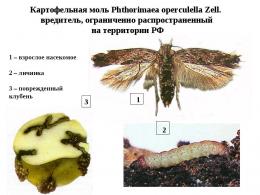
Meeting a pest in apartments and houses can hardly be called pleasant. From such a neighborhood you can expect damaged clothes, interior items and carpets. Few people know details about it, but to effectively combat it insects It is worth understanding the nature of origin, habitats and what is most susceptible to attack by the pest.
Content:
- Brief description of the moth
- Cycle and lifespan
- Type of moth
- Why does moth start living in the house and how does it get into the apartment?
- Ways to fight moths
- How to save cereals, nuts, flour from moths?
- Traditional methods of getting rid of insects
- How to get rid of moths in nuts
Brief description of the moth
The moth belongs to the order Lepidoptera insects. The color is pale brown, light gray, white with silver pollen on the wings. This small insect is nocturnal and feeds on the substance of the stratum corneum, that is, keratin.
The stomachs contain a large amount of acid, which perfectly digests fur, wool and other materials. The pest adapts well to different climatic conditions.
The greatest damage is caused by the larvae, and adults, upon reaching maturity, only mate and reproduce.
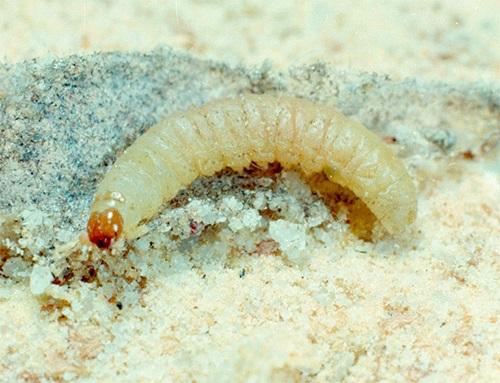
The pest is similar in appearance to butterflies, but their characteristic proboscis is absent. In the caterpillar stage, the butterfly consumes a large amount of food with its mouthparts, and this energy is enough to lay new offspring.The larvae have strong, large jaws, with which they even gnaw through seeds, nuts and seeds in fruits.
Cycle and lifespan
Caterpillars emerge from the laid eggs and turn into butterflies. Having reached puberty, butterflies lay offspring. In favorable conditions of city apartments and houses, this cycle can continue all year round without interruption.
The lifespan of an individual adult with wings is short and ranges from 15 to 30 days, depending on the species.
It moves little and only at twilight, since the wings are poorly developed and there is no protection from predators.
Stages preceding puberty:
- laying eggs. Young caterpillars appear on average after 2 weeks at room temperature;
- The larvae make a cocoon around themselves from the stratum corneum and live in it for a long time, from 90 to 300 days per year.

Type of moth
There are many species of this insect, and the most famous of them are:
All species cause significant damage in many areas of the economy if they are not dealt with in a timely manner.
Wax
Poses a danger to bee hives: caterpillars feed on beebread, collected honey and even attack larvae bees. However, moths began to be used in medicine for medicinal purposes due to their ability to digest wax with the help of special enzymes in the stomach. The result is a unique antibacterial substance with numerous beneficial properties.
Fur coat
Capable of ruining any, even the most expensive fur coat. In it she finds an inexhaustible source of nutrition and comfortable existence.Having eaten the required amount of hair with the help of a powerful mouthparts, the larvae move towards the nest, cutting off interfering hair along the way, resulting in stripes of clipped fur on the surface of the fur coat.
For the clothing type, wool products are a favorite delicacy. The appearance of this species is not very remarkable: light, golden color and small size of 8-9 mm. Females do not fly, they move by crawling to the right place, but males fly in search of females.
Room
Painted in light yellow with a golden tint. Caterpillars of this species are inactive and move only if they eat well. A special feature is a strong fear of light: when exposed to the sun's rays, they immediately hide in cocoons or look for a dark shelter.
Potato
It has a dark gray “dirty” color and can cause damage to agricultural areas. The female lays eggs on the inner surface of the leaves potatoes, after 7-10 days, light green or pink larvae appear from them, which feed on the tops and suck the juice from the bush.
Cabbage
Causes damage to the cruciferous family. The butterfly is elongated and sand-colored and has a special fringe on the edges of its wings. Such a butterfly flies poorly and is always close to the place where it appears. Cabbage caterpillars are green in color and have a brown head with jaws, and the eggs are painted dark green and are therefore hardly noticeable on plants.
Granary (food)
Such moths appear on food products that have been stored improperly, and most often live in cereals and groceries. Under natural conditions, this species feeds nuts and plant seeds, and therefore is most often found in forest-steppes, mixed forests and steppes.
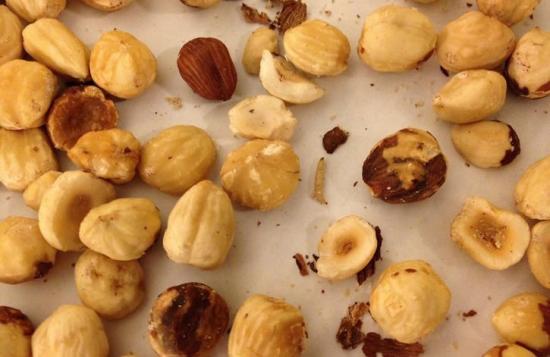
The length of an adult individual is about 8 mm, it adapts well to environmental conditions and is almost invisible to the naked eye.
The larvae are painted in light colors: pink, milky, sand. The life cycle lasts about 45-50 days.
Chestnut
Lives on maples and chestnuts. It waits out the cold winter time in the pupal state, and when the first warmth appears, adult individuals emerge from last year’s foliage and actively reproduce. The females forge the resulting eggs on young leaves. It is easy to find out about the appearance of such neighbors: orange spots are noticeable on the leaves.
Why does moth start living in the house and how does it get into the apartment?
The most favorable living factors for this pest are:
- presence of twilight;
- constant access to food;
- room temperature for continuous life cycle.
And it can get into your home in several ways:
- Having flown over from the neighbors. Although the pest does not fly well and does not fly much, it is quite capable of covering short distances through ventilation openings or holes near heating pipes.
- Having flown over from the street. In search of food and for reproduction, they can easily fly into a house from the street.
- With contaminated food. If the manufacturer did not store their products correctly and did not pay attention to heat treatment, various food products may be contaminated with larvae. They are invisible to the eye, but once in a warm environment they begin to feed again and grow into an adult flying in search of a partner.
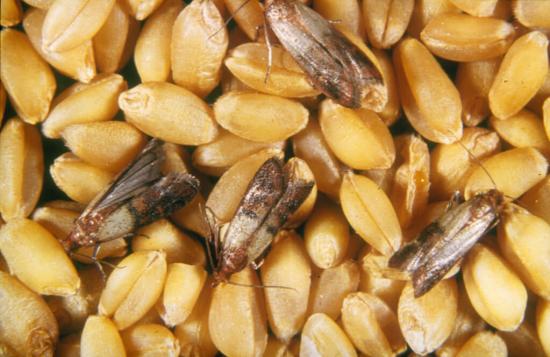
The most favorite “delicacies” for the pest are:
- Flour.
- Legumes.
- Tea.
- Coffee.
- Cocoa.
- Seeds.
- Dried fruits.
- Dried berries.
- Cereals.
- Herbs.
- Dry mixes.
- Animal feed.
- Baby food.
To avoid infection and spread of the pest, when purchasing the listed products, carefully inspect the packaging, and if there is the slightest presence of insects, do not take the product under any circumstances.
When you get home, transfer the contents of the package to an airtight food storage container. In this way you will prevent the pest from multiplying. The larvae are harmful primarily because they spoil food products.

By eating them, they leave behind numerous traces of their activity: eggs, husks, corpses, skins, feces. Yes, and there is a product that is infested with these insects, hardly anyone will want it; they will have to throw away the spoiled product completely.
And adult individuals are dangerous for humans only because they make new offspring, laying clutches in unexpected places.
Ways to fight moths
There are several methods to combat this pest, but the most reliable of them are:
- The most effective and efficient way is to prevent its appearance in the house. Be sure to follow the rule: after purchasing bulk products, pour them at home into hermetically sealed plastic, glass and metal storage containers. And the best option is to use transparent containers for these purposes.
- Keep the kitchen area clean and tidy. Do not allow food residues to remain on tables, storage cabinets, and never store cereals, baby food, or animal food in the open. Do wet cleaning more often and periodically review your groceries.
How to save cereals, nuts, flour from moths?
If the pest has already appeared, you urgently need to take action and perform the following sequence of actions:
- All affected products are thrown away, and if there are a lot of insects, then throw away good-looking cereals and flour without sparing, there is a high risk that pests are there in the form of eggs and larvae.
- Place all untouched groceries into containers with lids.
- Thoroughly wash all cabinets, kitchen surfaces and utensils with a strong soapy solution.
- After drying, wipe the surfaces with a 9% vinegar solution. You can also treat cabinets against eggs, larvae and mature butterflies with aerosols: Raptor, Antimol, Armol.
- Do a wet cleaning of the entire kitchen.
- Ventilate the room well.
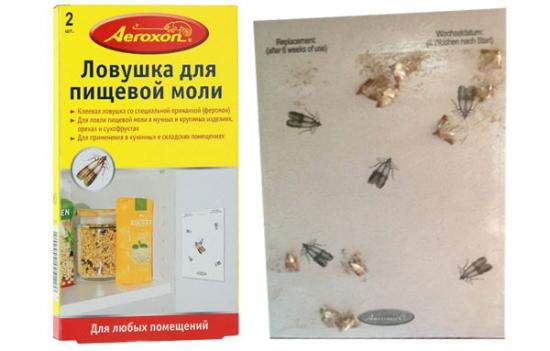
After such a general cleaning, carefully inspect the contents of the shelves and cabinets for 3-5 days; pests may appear again and then you will have to repeat the entire procedure again.
At the same time, it is possible to use special tools and traps sold in hardware and specialized stores. The traps contain special pheromones that attract adult insects, but such a trap must stand for at least 2 months for a visible effect.
Traditional methods of getting rid of insects

Moths do not like sharp and strong odors, so the following tips will help to prevent and combat them:
- Garlic. Peel the fresh garlic cloves and place 1-2 pieces in each container. The garlic smell from flour and cereals disappears quickly, but is a good deterrent to uninvited guests.
- Dried twigs geraniums or sweet clover have a specific strong odor that the butterfly cannot tolerate. Use this method with caution in families where there are people suffering from allergies.
- Lavender. A fragrant branch can be placed in a closet; it perfectly scares away uninvited guests from the contents of kitchen cabinets.
- They have a similar effect sagebrush, tansy, rosemary.
- Fresh orange peels are often laid out in cabinets. Citrus fruits are very hostile to moths, and they will not breed or inhabit the area.
How to get rid of moths in nuts
The nut moth is a moth. By itself, it does not cause any harm to the nuts, but the larvae spoil the food and are in safe shelter under the shell until the pupal stage.

Nuts It is difficult to save from insects, because they quickly become unusable. To get rid of moths in various nuts: hazelnuts, walnuts, hazelnuts and others, it takes a lot of effort.
What can you do with nuts if moths have already settled in them? How to get rid of moths in walnuts?
Recommendations for pest control in nuts are the same as for other species:
- Do not create rubble or deposits of rubbish at home.
- Maintain order in the apartment, often do wet cleaning.
- Store nuts in tightly closed containers.
- Review inventory periodically.
- At the slightest sign of the appearance of a butterfly, carefully sort through the nuts and carry out comprehensive measures to get rid of larvae, eggs and flying individuals.
The moth is a tenacious insect that can remain unnoticed for a long time and can even hide for a while, waiting for favorable living conditions. But the most important enemies of moths are maintaining cleanliness in the house and taking timely measures to get rid of them.
You can learn more about moths and methods of fighting them by watching the video:

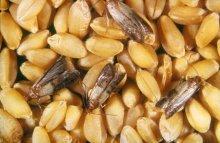
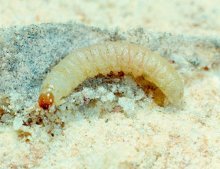

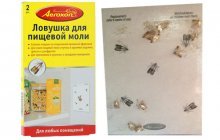


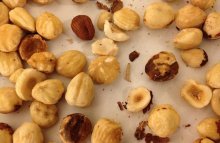
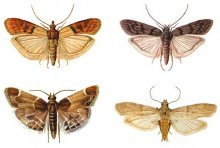
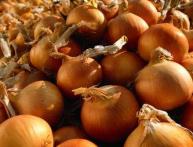
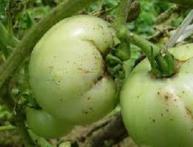
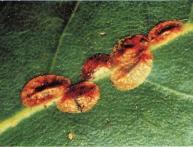

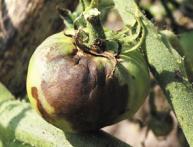
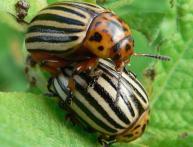
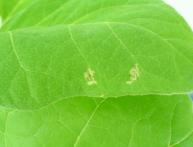
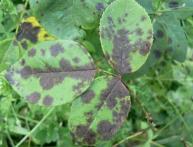
Comments
Such a moth flies around in our city apartment, and also flies around our neighbors. Nothing helps. They even threw out all the cereal from the kitchen water heater and washed everything thoroughly. It flies! So we still clap our hands on a regular basis :)
It also seems to me that it is impossible to get rid of this moth. She is everywhere and eats everything she finds. I’ll try to put citrus peels and aromatic herbs on the shelves, this is the safest way.